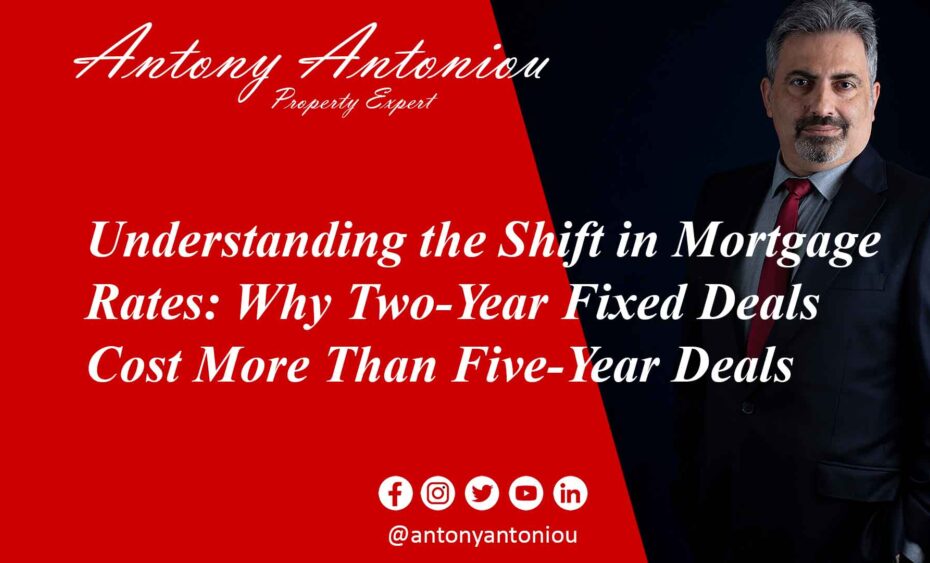Understanding the Shift in Mortgage Rates: Why Two-Year Fixed Deals Cost More Than Five-Year Deals
Introduction
As the UK’s property market continues to evolve, homeowners are facing an increasingly complex and costly landscape when it comes to mortgage deals. One significant change that has puzzled many borrowers is the reversal of traditional trends, where two-year fixed mortgages are now more expensive than five-year deals. In this blog post, we delve into the reasons behind this shift, exploring the factors that have contributed to the changing mortgage rates and what it means for homeowners looking to secure a new deal.
The Changing Landscape of Mortgage Rates
Historically, it was common knowledge that shorter mortgage terms offered more favourable interest rates. Lenders perceived less risk when providing a mortgage for a shorter timeframe, resulting in lower rates for two-year deals. Conversely, longer-term mortgages came with higher interest rates, as borrowers sought to secure a fixed rate for a more extended period.
Interest Swap Rates: The Driving Force
To comprehend why this trend has reversed, we need to examine the role of interest swap rates. Swap rates represent the interest rates at which mortgage lenders borrow money from other lenders. These rates directly impact fixed-term mortgages, as banks typically acquire funds for two, three, five, or ten-year periods, reflecting the durations of new fixed-rate mortgage deals.
The Setting of Swap Rates
The pricing of swap rates is negotiated among banks, and these discussions involve predictions about the future state of the economy. The Bank of England uses this data to calculate an average known as Sonia (the Sterling Overnight Index Average), which plays a crucial role in determining mortgage rates.
The Uncertainty of Lender Rates
Presently, there is a notable trend of lenders raising rates on two-year swaps and mortgages, surpassing rates for other term lengths. This hike is primarily attributed to lender uncertainty in the face of ongoing interest rate turmoil. The Bank of England has raised its base rate multiple times in response to soaring inflation, leading to a current rate of 5 per cent. Experts predict that both the base rate and swap rates will continue to rise in the coming year, potentially reaching 6 per cent by the year-end.
The Impact on Borrowers
As mortgage rates rise, borrowers face tough decisions regarding their mortgage term. Surprisingly, despite the higher rates on two-year mortgages, a significant percentage of homeowners, approximately 54.8 per cent, still opt for these shorter deals. The reason behind this choice lies in the desire to endure a higher rate for a short period, with the hope of securing a lower rate when the two-year term expires.
What to Do If You Need a Mortgage
For homeowners whose fixed-rate deals are coming to an end or those looking to purchase a property, it is crucial to explore options as early as possible. By comparing rates and consulting with a mortgage broker, borrowers can identify suitable deals and secure favourable rates before further increases occur. By acting proactively, borrowers can potentially avoid costly arrangement fees and secure a rate that aligns with their financial needs.
Conclusion
The shift in mortgage rates, with two-year fixed deals now costing more than five-year deals, can be attributed to the fluctuations in interest swap rates and lender uncertainty due to the current interest rate turmoil. As the economy stabilizes, longer-term mortgages are expected to become more affordable once again. However, for the time being, borrowers must navigate the current landscape with careful consideration and the guidance of expert mortgage brokers to secure the most favourable deals available.

